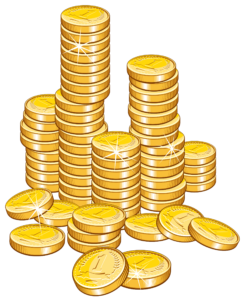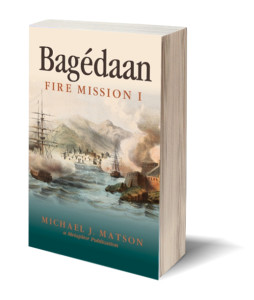Money and Credit
 On Menelon, money and credit work a little differently than they do in our modern times on Earth. In general, instruments that function as units of exchange come in three forms:
On Menelon, money and credit work a little differently than they do in our modern times on Earth. In general, instruments that function as units of exchange come in three forms:
- Commodity money: In other words, metal coinage, usually gold, silver, and copper or brass. Among the lower classes, this is often the only kind of money they either hold or accept.
- Bank notes: The most common form of a bank note is, of course, paper money. But the paper money we're talking about here is (most often) issued by a bank either in exchange for commodity money (for a fee), or a withdrawal from a "demand deposit account", against which the depositor may also write checks, just as we do today. They are called "demand deposits" because the money must be available to the depositor on demand, so the bank must keep all the funds deposited in these accounts available at all times. Because of this limitation, banks charge a fees to holders of these kinds of accounts. Even so, among the middle and upper classes, demand deposit accounts are very common as the convenience they offer in smoothing the flow of different types of financial instruments from one form to another is considered more than worth the price. Another type of account that is quite common is the "time deposit" account. Similar to a modern savings account, this is money the depositor agrees to leave in the bank, for the bank's use, for a specified period of time, in return for a fixed rate of interest on the principle.
- Credit money: Bills of exchange, promissory notes, and bank checks are but a few examples of credit money. Most people will rarely, if ever, encounter or use this type of money. In the business community, and among the nobility and aristocracy, however, they are very, very common instruments of exchange that come complete with their own set of culture norms. More on the subject of credit can be found below.
Because Menelon still uses commodity money, they have no annual inflation rate. Saving, for the average person, usually means tossing extra coins in a jar or box and hiding it away. Folks on Menelon know, just as our (great) grandparents knew, that the money they save today will buy just as much in twenty years as it does today. What price fluctuations there are come from natural forces or man made disruptions, not from engineered devaluation of the currency—though debasement does happen, as we'll see below.
So, while each country has its own coin, as they are all based on the weight and purity of the metals from which they are made, they are pretty much interchangeable. An ounce worth of coined silver is worth an ounce of coined silver, no matter whose face is on it, or which royal mint struck it.1 On the other hand, while debasement isn't currently much of a concern from the great courts of the post war world, pirates and organized crime syndicates are famous for debasing the coinage that comes into their hands. Yet another reason use of bank accounts may be increasing. For a small fee, the bankers willingly take on the risks associated with foreign exchange, coin clipping, and forgery, in addition to the above mentioned convenience of accepting all forms of credit instruments.
Currency Interchange Chart
Because Cascadia was the only country to have an economy that remained intact (though not unaffected), during The Great War, and because, in our article on value and prices, we had to make use of it, it seemed only natural that the Cascadian Pound be an analogue to the 19th century British Pound Sterling; but the Cascadian pound is not the oldest sterling based currency. That honor belongs to the Vin-Llamázi launa. Cascadia was founded primarily by Vin-Llamázi immigrants, so the Cascadian Pound was patterned after the launa. The Balcheri silver link, on the other hand, is an analogue to the Vin-Nôrëan mark. The Sudaani ail is the newcomer. It was created after the war. Not surprisingly, as Sudaan's two largest trading partners are Cascadia and Vin-Llamáz, the new currency is structured similar to the pound and launa.
| Currency | Symbol | Exchange Rate |
|---|---|---|
| Cascadian Pound | £ | Reference Currency |
| Cascadian Shilling | s | 20 per £ |
| Cascadian Pence | d | 12 per shilling, 240 per £ |
| Vin-Llamázi Launa | ₤ | Equal to the Cascadian pound |
| Vin-Llamázi Kyl | ₭ | Equal to the Cascadian shilling |
| Vin-Llamáz Sitt | s | Equal to the Cascadian pence |
| Vin-Nôrëan Mark | ℳ | Equal to the shilling & Kyl |
| Vin-Nôrëan Fenning | ₰ | Equal to the pence & sitt |
| Balcheri Silver Link | ₴ | Equal to one mark, shilling, or kyl |
| Balcheri penny | p | Equal to one fenning, pence, or sitt |
| Sudaani Aial | ₳ | Equal to the pound & Launa |
| Sudaani Gial | ₲ | Equal to the shilling & kyl |
| Sudaani Hial | h | Equal to the pence and sitt |
Credit
Above, credit was listed as a form of currency. This is because, on Menelon, many credit instruments are fungible. A check written by a prominent, well respected business person or noble will typically pass through many hands in the local community before it is presented to the issuing creditor for redemption. Obviously, this gives the idea of "credit worthiness" an entirely different level of meaning than we're used to in our world. Promissory notes issued by banks, governments, large companies, and of course, the titled nobility, have very high acceptance rates that can extend well beyond their local area. They can, therefore, charge premium rates of interest for the use of their money, and in turn pay very low rates to borrow.2 Smaller companies and the lower nobility may only have their notes accepted within their community. But even so, if you're a business in good standing, your promissory notes will probably be accepted by those vendors with whom you typically do business and those with whom they do business, which is all you need.
As a practical matter, however, most businesses and the wealthy usually transact through a bank, so in that sense, the promissory note is very similar to a modern bank check issued against a running balance. You write the promissory note, which then wonders around like money for a few months (or years), until it finally lands back at the bank who manages your accounts, and they “cancel it out” by paying the face value out in coin or banknotes.
